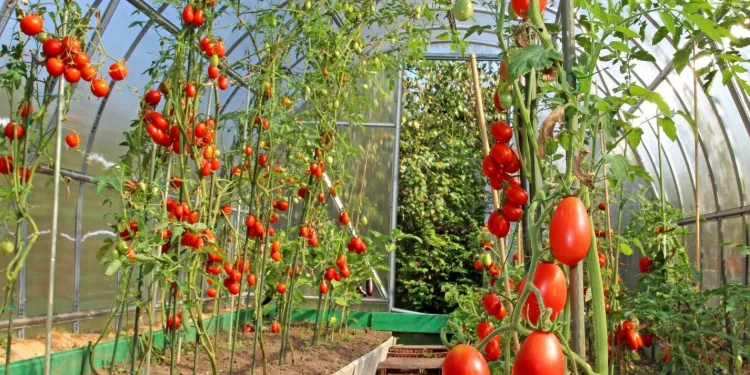Practical Strategies for Efficient Cultivation of Indeterminate Tomato Varieties in Greenhouse Environments
In the world of greenhouse agriculture, managing tall, indeterminate tomato varieties presents both opportunities and challenges for growers and investors. As greenhouse cultivation continues to expand, understanding effective techniques for handling high-growing tomato plants can lead to increased yields, better crop health, and overall success. This article explores key methods for managing tall tomatoes, highlights the benefits of these varieties, and offers insights for investors looking to tap into this growing segment of the vegetable industry.
The Benefits of Growing Tall Tomato Varieties
Indeterminate or tall tomato varieties are favored in greenhouse environments for their continuous growth and extended fruiting periods. Unlike determinate varieties, which grow to a set height and produce fruit in a short period, indeterminate tomatoes keep growing and producing fruit throughout the season. This trait is ideal for maximizing greenhouse space and achieving higher overall yields.
Key Advantages of Tall Tomato Varieties:
- Extended Harvest Period: Indeterminate tomatoes produce fruit over a longer period, which allows growers to harvest continuously throughout the season. This extended production can lead to increased revenue from consistent crop sales.
- Increased Yield Potential: These varieties often produce more fruit per plant compared to determinate types. By managing the growth of these plants effectively, growers can optimize the use of greenhouse space and resources to achieve higher yields.
- Enhanced Quality: Tall tomato varieties can benefit from the controlled environment of greenhouses, which helps protect plants from pests and diseases, leading to better quality produce.
Techniques for Managing Tall Tomato Plants
As indeterminate tomato plants grow, they can reach heights that exceed the limits of typical greenhouse structures. Effective management techniques are essential for maintaining plant health and optimizing yields. Here are some practical strategies recommended by experts from the “Ogorod” channel:
1. Utilizing String Supports:
One of the most common methods for managing tall tomato plants in greenhouses is using string supports. By attaching the plants to vertical strings or supports, growers can guide the plants upward as they grow.
- How to Implement: Install strong, vertical strings from the ceiling of the greenhouse. As the tomato plants grow, gently tie the main stem to the string, ensuring that you do not damage the plant. Regularly adjust the ties as the plant grows taller.
2. Employing a Trellising Technique:
A more advanced technique involves using a trellising system to support the plants. This method provides additional structure and stability for tall tomato plants.
- How to Implement: Create a series of horizontal trellises at different heights throughout the greenhouse. As the plants grow, guide the stems along the trellises, using plant clips or ties to secure them.
3. Implementing a Weaving Method:
For an effective way to manage the height of tomato plants, the weaving method can be employed. This technique involves weaving the plant stems between support structures to manage their growth.
- How to Implement: As the tomato plants grow, weave the stems between the support structures (such as bamboo stakes) in a figure-eight pattern. This method helps distribute the weight of the plant and keeps it manageable.
Best Practices for Cultivating Tall Tomatoes
Successful cultivation of tall tomato varieties involves more than just managing plant height. Growers should also focus on best practices for overall plant care:
- Regular Pruning: Prune tomato plants to remove excess foliage and focus the plant’s energy on fruit production. This practice improves air circulation and reduces the risk of diseases.
- Consistent Watering and Fertilization: Provide consistent watering and balanced fertilization to meet the needs of tall tomato plants. Regularly check soil moisture levels and adjust as needed.
- Monitoring for Pests and Diseases: Keep a close eye on plants for signs of pests or diseases. Early detection and treatment are crucial for maintaining healthy plants.
Market Opportunities and Future Outlook
The growing interest in greenhouse tomato cultivation presents numerous opportunities for investors and entrepreneurs. Tall tomato varieties offer a viable option for those seeking to maximize greenhouse space and achieve high yields.
Market Opportunities:
- Increased Consumer Demand: As consumers seek high-quality, fresh produce, greenhouse-grown tomatoes are becoming increasingly popular. Investing in tall tomato varieties can cater to this growing demand.
- Sustainable Practices: Greenhouse cultivation allows for controlled environments that can be optimized for sustainability. By investing in efficient growth management techniques, growers can contribute to environmentally friendly practices.
- Innovative Technologies: The greenhouse industry is ripe for innovation, with new technologies emerging for plant management, pest control, and nutrient delivery. Investors can explore opportunities to integrate these technologies into their operations.





